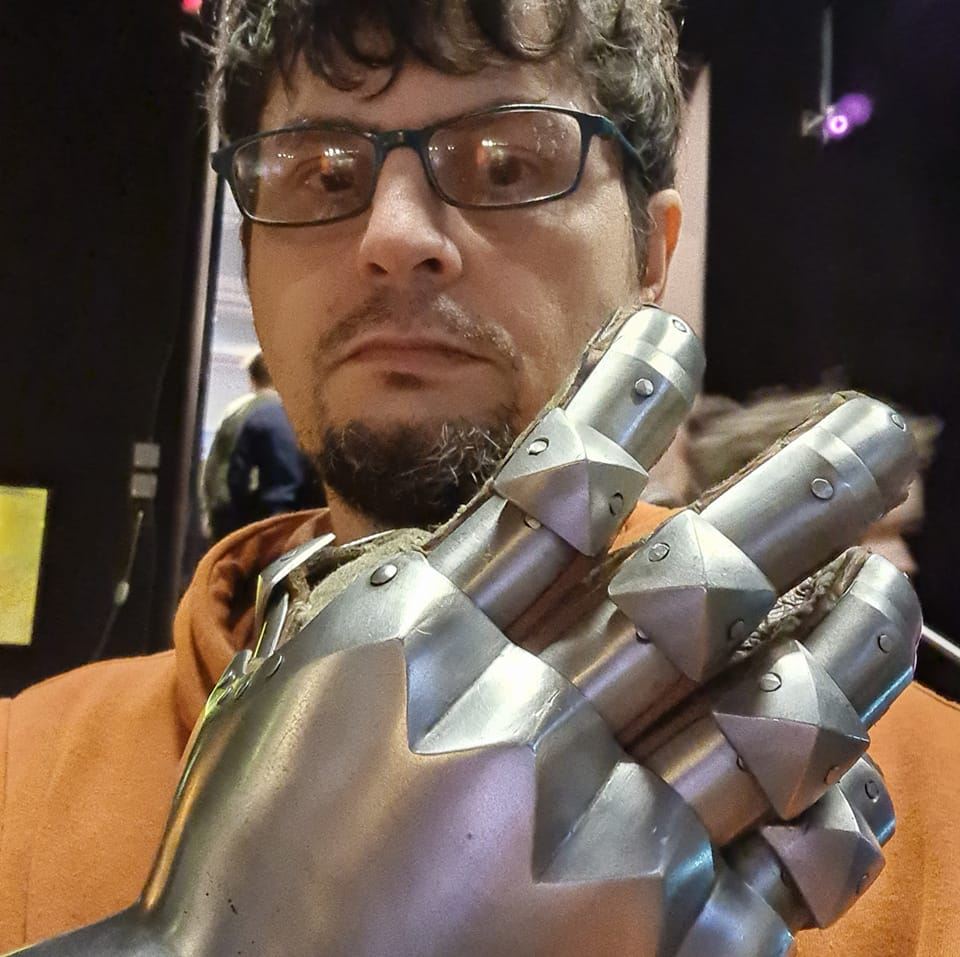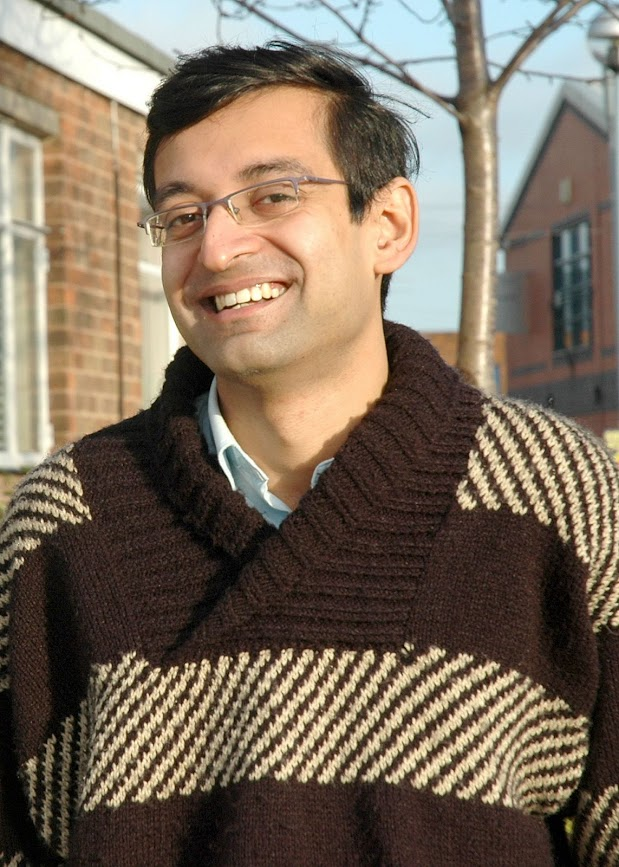Magdalena Cielecka

A game developer with over ten years of experience as a producer. Worked on adventure games such as Grim Legends series, Irony Curtain: From Matryoshka with Love and a narrative RPG called Gamedec. Currently holding the position of Head of Production at Anshar Studios. Doctor of Humanities with a thesis on dialogue structures in video games, game studies scholar and an educator. For over ten years she was a lecturer in the field of Game Design at the Jagiellonian University and Tischner European University (currently part of SWPS University) in Kraków. In the years 2019-2022 she was also serving as deputy dean and scientific coordinator of the Game Design program at Tischner European University. Co-organizer of six international conferences in the field of Game Studies in Krakow and Katowice. Curator of the videogame section of the Ars Independent festival since 2024, member of the Digital Dragons Program Board and juror of the CEEGA competition for 5 years. In 2025 received a special recognition award at Digital Dragons Awards ceremony.
The Golden Age of Playful Wallbreaking: experimental and immersive dialogue structures in 90s adventure and role-playing games
Genres’ Golden Ages, as far as popular gaming discourse goes, are observed from a nostalgic perspective of their contemporary fans. Thus, more often than not, when defining such ages they tend to cling to the notions of quality, artistic direction, thematic depth and maturity. Incidentally, at least for adventure and role-playing games, those same times – the 90s – can be seen as a decade of quirky mechanics, bold experiments and somewhat chaotic attempts at pushing boundaries. Studios rose and fell, sometimes beginning as a rebellious offshoot of like-minded developers, sometimes ending integrated into larger corporate structures.
One could begin as a company’s web designer and three years later take on the role of a Lead Designer. In dynamically changing circumstances like those, unconventional design decisions were made and followed-through, namely ones connected with dialogue structures and player character that navigates them. From ways of incorporating character’s statistics as dialogue variables, through creating landscapes of content that could be cut off by a single word, to emersive yet character-defining gameplay constraints, many of those choices seem to have thrived on playful and carefree attitude towards the medium. A one that seemingly clashes with dignified realisations of a Golden Age.
The talk will explore said experimental and unconventional design choices while attempting to answer how a medium can peak while being actively explored.
Tomek Kreczmar

Tomek Kreczmar is one of important figures in the history of the Polish gaming industry.
In the 1980s, as a teenager, he was part of the Polish sf&f fandom movement and contributed to underground fan publications known as klubówki. It was during this time that he discovered role-playing games, which would become a defining part of his identity.
In the 1990s, he worked at MAG Publishing House, a pioneering company that laid the foundation for the Polish tabletop gaming market. He played a role in introducing seminal games to Poland, including Warhammer Fantasy Roleplay, Earthdawn, Werewolf: The Apocalypse, and Doomtrooper (to name a few). He also served for many years as editor-in-chief of Magia i Miecz, the country’s most influential RPG magazine.
Kreczmar co-created the tabletop role-playing game Wiedźmin: Gra wyobraźni and the collectible card game Thorgal. He also edited the Polish version of Dungeons & Dragons 3rd and 3.5 editions.
In the early 2000s, he became head of Hyper, a television channel devoted to video games and technology, a role he held for over a decade. With a creative ensemble he created many important TV shows. Later, he co-developed several video games, including Floodland.
He has authored multiple gamebooks, translated RPG rulebooks and video games, and written countless articles popularizing science fiction, fantasy, and games. He has published two books: Byłem geekiem w PRL-u, a memoir of fandom and tech culture behind the Iron Curtain, and Kostki zostały rzucone, the first Polish history of role-playing games both worldwide and in Poland.
Kreczmar holds master’s degrees in mathematics and philosophy, and engineering degree in computer science.
Bravehearts – how 90s define Polish gamedev, both digital and analogue
The 1990s were a time of profound global transformation. The Soviet Union collapsed, Germany reunified, civil war broke out in Yugoslavia, and conflict flared in Chechnya. Meanwhile, the United States launched Operation Desert Storm. It was also a decade of tremendous technological shifts: the era of Windows 95, the birth of mobile phones, the rise of 3D gaming, and, of course, the emergence of the internet. Mass culture was flourishing—Braveheart ruled the big screen, MTV dominated television, and grunge music captured the hearts of a generation.
In Poland, these changes were felt on multiple levels. After decades behind the Iron Curtain, we suddenly gained access to pop culture, art, and games. After years of sanctions and scarcity, cutting-edge technologies began to appear on our market. Following an era of censorship and restriction, dozens of publishers sprang up, releasing books, comics, and games. Laws were changing, social norms were evolving, and the economy was rapidly transforming.
Today, Polish game products like The Witcher series or Neuroshima Hex are known across the globe. But in the 1990s, the local gaming market was barely a shadow of what it would become. While RPG fans abroad were diving into World of Darkness, we were painstakingly copying hard-to-find AD&D rulebooks by hand and learning English from expensive, Xeroxed copies of Cyberpunk. While Eye of the Beholder captured the imagination of gamers worldwide, we were assembling our very first PCs.
Join me on a journey through the twists and turns of 1990s Poland—a story of how, from the rubble of the Polish People’s Republic, the foundations of today’s successes were laid, and how a fledgling grassroots movement grew into a thriving industry.
Souvik Mukherjee

Souvik Mukherjee is associate professor in Cultural Studies at the Centre for Studies in Social Sciences Calcutta, India and a pioneering games studies researcher from the Indian Subcontinent. His research looks at a diversity of topics such as videogames and storytelling, videogames as colonial and postcolonial media, gaming cultures in the Indian Subcontinent and currently, Indian boardgames and their colonial avatars. Souvik is the author of three monographs, Videogames and Storytelling: Reading Games and Playing Books (Palgrave Macmillan 2015), Videogames and Postcolonialism: Empire Plays Back (Springer UK 2017) and Videogames in the Indian Subcontinent: Development, Culture(s) and Representations (Bloomsbury India 2022) and is currently working on a book project on Indian board games and colonialism. He was named a ‘DiGRA Distinguished Scholar’ in 2019 by the Digital Games Research Association and a Higher Education Video Game Alliance (HEVGA) fellow in 2022. He has been a board-member of the Digital Games Research Association (DiGRA) and a founder-member of DiGRA India and DHARTI, the Digital Humanities group in India. He is also an affiliated senior research fellow at the Centre of Excellence, Game Studies at Tampere University.
South Asia in the 90s through a Videogame Lens
Globalization also came to South Asia at breakneck speed in the Nineties after a stagnant period when, for example, India saw the infamous ‘License Raj’ and the exit of IBM. Commentators note that ‘the 1980s and 1990s […] were marked by a “frenetic media multiplicity” when cassette culture, colour television, VCRs, cable and satellite broadcasting, and the Internet all arrived with hardly any temporal gaps’ (Punathambekar and Mohan 2019: 9). In Bhutan, quite uniquely, television and Internet were introduced together as late as 1999. Despite such widespread upheavals in telecommunication and the information technology sectors, videogames remained a latecomer in South Asia. They did, however, arrive and the first Indian games were made in the late nineties. An industry was built that shaped the way of things to come in the decades that followed. While the fall of the Iron Curtain and the ‘end of history’ were not as directly obvious in the videogame scenario of a region just beginning to get exposed to home computing and digital media, especially when protests against computerization was part of a political agenda in the preceding decade, what was palpably obvious in even the early Indian videogames was European colonialism and its aftermath, the partition of the region. A whole new and much under-researched subculture emerged in videogame parlours, cybercafes and homes that redefined labour, family and other dynamics in ways that would only become evident in the future. This talk looks at the much neglected but crucial birth of videogaming in a part of the Global South that is often associated with IT globally but is still considered a ‘sleeping giant’ in the videogames industry.